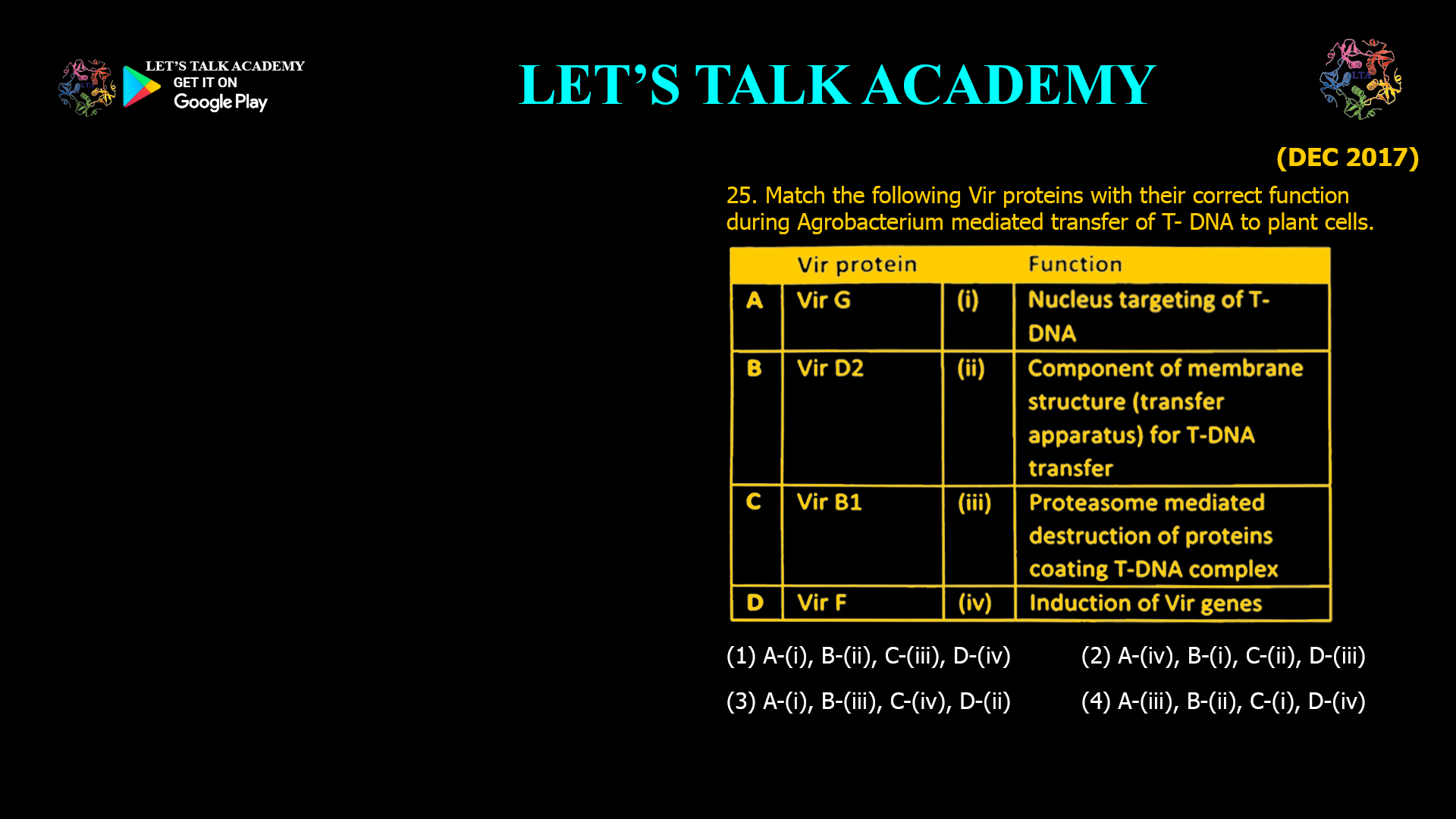- Match the following Vir proteins with their correct function during Agrobacterium mediated transfer of T- DNA to plant cells.
(1) A-(i), B-(ii), C-(iii), D-(iv)
(2) A-(iv). B-(i). C-(ii), D-(iii)
(3) A-(i), B-(iii), C-(iv), D-(ii)
(4) A-(iii); B-(ii), C-(i), D-(iv)The correct matching is option (2): A‑(iv), B‑(i), C‑(ii), D‑(iii).
Step-by-step matching
A. VirG → (iv) Induction of vir genes
VirG is the response regulator of the VirA/VirG two‑component system. When VirA senses plant phenolics and sugars, it phosphorylates VirG, which then binds vir promoters and activates transcription of virulence (vir) genes.
So, A matches (iv) – induction of vir genes.B. VirD2 → (i) Nuclear targeting of T‑DNA
VirD2 is attached covalently to the 5′ end of the T‑strand and carries nuclear localization signals (NLSs). It serves as a pilot protein that guides the T‑DNA to the plant nucleus, working with importin α/β and VirE2.
So, B matches (i) – nucleus targeting of T‑DNA.C. VirB1 → (ii) Component of membrane structure (transfer apparatus) for T‑DNA transfer
VirB1 is a lytic transglycosylase that helps remodel peptidoglycan so the VirB/VirD4 type IV secretion system (T4SS) can assemble; its processed form VirB1* participates in T‑pilus and T4SS formation, i.e., the membrane transfer apparatus.
So, C matches (ii) – component of membrane structure (transfer apparatus) for T‑DNA transfer.D. VirF → (iii) Proteasome‑mediated destruction of proteins coating T‑DNA complex
VirF is an F‑box effector protein exported into plant cells that recruits the host SCF ubiquitin–proteasome pathway to degrade VIP1, VirE2 and other associated proteins, thereby uncoating the T‑DNA complex and counteracting plant defenses.
So, D matches (iii) – proteasome-mediated destruction of proteins coating T‑DNA complex.
Why other options are incorrect
-
Options (1), (3) and (4) misassign at least one Vir protein. For example, they may pair VirG with nuclear targeting or VirD2 with vir gene induction, which contradicts experimental evidence that VirG is a transcriptional activator and VirD2 is the nuclear pilot protein.
SEO‑oriented introduction (for article use)
In Agrobacterium-mediated gene transfer, VirG induces vir gene expression, VirD2 pilots T‑DNA to the nucleus, VirB1 helps build the type IV secretion apparatus across the bacterial envelope, and VirF promotes proteasome-mediated uncoating of the T‑DNA complex in plant cells. These roles make the correct matching of Vir proteins and functions A‑(iv), B‑(i), C‑(ii) and D‑(iii).
-



